Intel DH57JG “Jet Geyser” - Intel's First Mini-ITX H57
by Rajinder Gill on March 1, 2010 2:00 PM EST- Posted in
- Motherboards
Performance Summary
At fixed frequencies, there’s little to divide the boards in 2D/3D application performance:
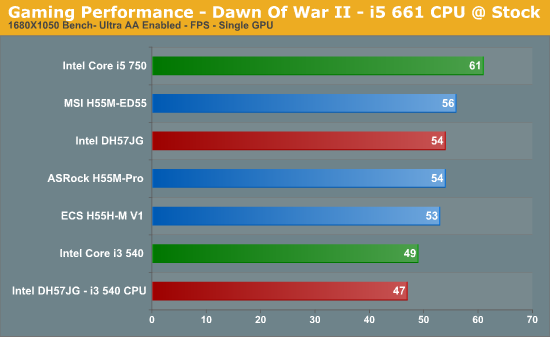

USB file transfer performance is a little slow though (we've reported this back to Intel):
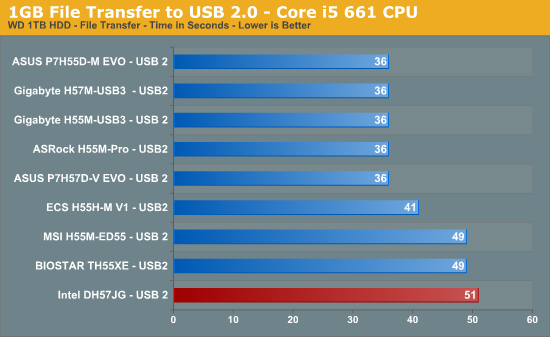
Power Consumption
Our power consumption testing utilizes the same batch of components under similar circumstances in a bid to monitor variances between idle and CPU load conditions using an AC wall meter for power consumption measurements. We install the vendor supplied power saving utilities on each board and enable power saving modes that don't involve any kind of underclocking or CPU core frequency modulation in order to run an apples to apples comparison. Assuming a maximum 150w load in the worst case scenario, actual motherboard power consumption is around 15%~20% lower than the shown figures if you factor out switching losses at the PSU.
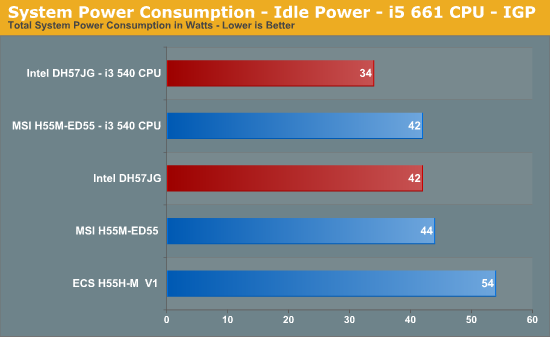
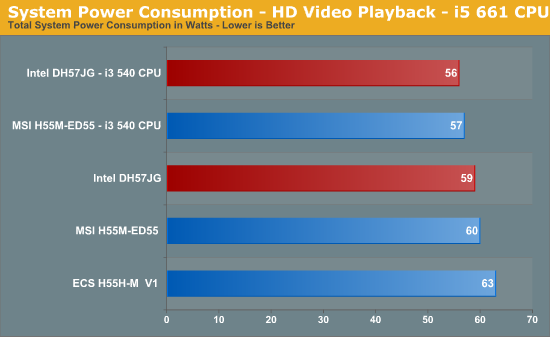
DPC Audio Latency
We’re often asked to include a DPC latency screenshot by audio enthusiasts, the DH57JG turns in a respectable performance:
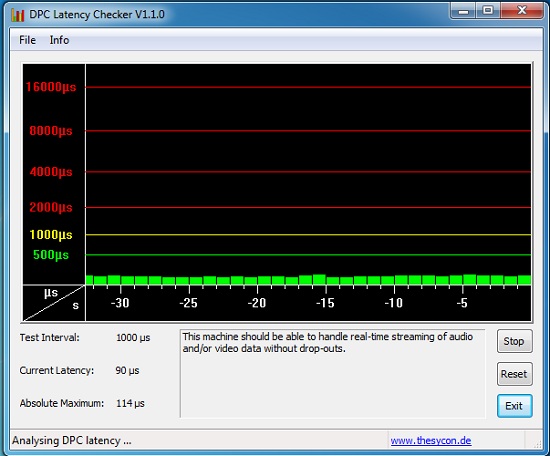
Overclocking
Like other mini-ITX motherboards, overclocking is limited by the absence of control over a key voltage rail. In this instance, Intel chose to limit processors to stock VID for CPU Vcore. The end result of this is that you’ll be limited to around 3.5GHz or so with a Clarkdale processor.
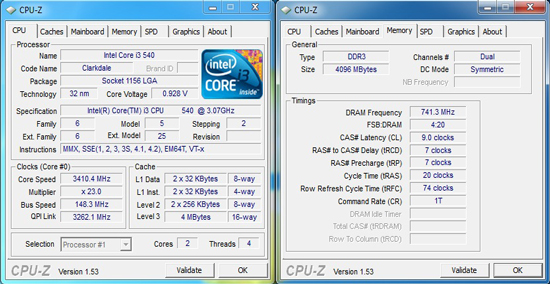
Forget about any kind of manual under-clocking on Clarkdale CPU's because you can't adjust CPU multiplier ratios on the current BIOS. SpeedStep and C-states obviously work as per Intel specification, stepping down to a 9x multiplier ratio and 0.85V core VID during light load scenarios. As a workaround for the absence of core multiplier ratio control, we suggest you change idle state power management percentages in the advanced pane of power options in Windows Control Panel - if you intend to use this board as a light load file/media server.
You can use Lynnfield processors in this board, although overclocking is limited by TDP. If you set processor core frequency higher than 3.3GHz or so, you’ll either run out of headroom due to insufficient voltage for Vcore, or the board will throttle the CPU when under load to keep current draw within the bounds of the VRM circuit.










34 Comments
View All Comments
Forgetsalvation - Thursday, March 25, 2010 - link
I talked to Intel presales support, i was informed that essentially this motherboard's BIOS has been locked down so that it will not support the core i7.unfortunately i did not discover this until after i purchased this motherboard and a i7-860.
I was very hopeful when I saw this review showed a i7-860 that worked, how ever i still can not get my system to boot.
Do the moderators have any suggestions for me, i very much want to run this combo but I am running out to time to return these parts if they will not work
Erick Thompson - Monday, March 22, 2010 - link
I would love to use the M350 case from mini-box, but the largest power supply I can get is 102 watts. With this board and a i3 530 (using integrated graphics), along with a SSD drive, it seems like 102 watts would be enough, if pushing the edge a bit. Any thoughts?fbd - Tuesday, March 16, 2010 - link
Yeah im interested in that also... I see that actually u tested a Core i7 in the board but i read in the documentation of the board that it is designed to support cpus up to 87W TDP only, while the i7 has 95 W. What does that mean? Is some kind of hardware part ( e.g. circuitry) of the board not sufficient to support an i7 or what? Or does it support it only at lower speeds? Im a bit confused. What does this mean: "We managed to get the board to post at 21X150 BCLK, but found processor core frequency throttles down to 3GHz or so under full load to ensure safety for the CPU VRM". Does it mean that if u put a stock core i7-860 into the board it wont be able to operate over 3ghz? What about turbo boost then? It cant go over 3ghz either? Thx for any reply.abnderby - Saturday, March 6, 2010 - link
Inoticed your comment about not reviewing many intel boards. Yes I do agree with you on the fact that they do not offer the best package of thrills and frils. But it has been my experience with many of the other manufacturers that the quality and length of service of their boards are no where near that of Intels. I have run into many issues with other boards after a year of 24/7 use. Some of the board components would fail or the boards would die.Over the last 12 years I have only had 2 Intel boards die with less than 5 years of service. None of which were my workstation/server boards or high end PC boards. Intel does put in a tremendous amount of quality that lasts.
Currently I run 1 dual xeon that is 6 years old with 2 3.6 GHz xeons with 64 bit Windows 7. It stills runs flawlessly. I run a core 2 on intel uBTX 3 years now flawlessly.
So please your crowd out here is not just enthusiests that like or have to overclock everything. Many of us want the high quality and long lasting systems. Intel boards must be in that mix.
Duane
MamiyaOtaru - Friday, March 5, 2010 - link
Jet Geyser is one of my favorite thermal features in Yellowstone. Around the corner from the Fountain Paint Pots. It's not a very big one though. Wonder if Intel had it in mind when naming their boardmschira - Monday, March 1, 2010 - link
HiI love these powerful low power systems!
I would be very interested in tests of a file server based on these board.
Like using a Highpoint RocketRAID 2322 system.
Cheers
M.
AmdInside - Monday, March 1, 2010 - link
The P45 based mini-itx board from Intel had a lot of issues. I am not sure if I would jump on this one myself.hnzw rui - Tuesday, March 2, 2010 - link
As far as I'm aware, Intel doesn't have a P45 Mini-ITX board. They do have an Intel DG45FC which is a G45 board.play2learn - Monday, March 1, 2010 - link
Usb 3.0 and 32 nm graphics...Then maybe!blyndy - Monday, March 1, 2010 - link
It looks like m-itx is the new m-atx, which is great.